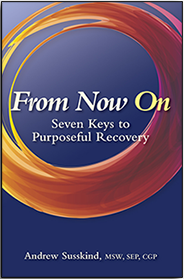Welcome back to our exploration of shame. Now that we’ve started to identify and name it, how do you build shame resiliency?
Action Step #1
Distinguish between healthier shame and toxic shame. Remember that healthier shame lets you know if you’ve crossed boundaries or done something that is not in your integrity. On the other hand, toxic shame usually stems from childhood messages that really don’t belong to you. Track both versions of shame and write them down in a “shame journal.” Writing often builds perspective, and then share your journal entries with an emotionally reliable person. “Shame is given to us by others, and shame is healed through others.”
Action Step #2
Your inner critic originated from toxic shame, and when you go into self-attack mode today, you’re only pouring salt into an old wound. John Bradshaw was one of the originators of the term inner child referring to the part of you that needs nurturance, acceptance and unconditional love. Through self-compassion and paying attention to your inner child, self-acceptance is possible. Twelve step recovery describes acceptance as the answer to all my problems today, and acceptance is a daily practice. Write a letter to your inner child and focus on accepting the child within you fully. Sometimes it’s suggested to write the letter in your non-dominant hand to truly feel as if you are that little kid. Once you’ve completed the letter, share it with someone who accepts you fully.
Action Step #3
Shame is healed through others. Locate 1-3 people you trust and respect. Let them know that you’re trying to heal your shame and that you need their honest feedback. Ask them the following questions either in person (preferred method) or by phone: 1) What do you like about me? 2) How do you see me as a good person? If it’s difficult to ask others for help with this exercise, consider joining a therapy group—one of the finest ways to build shame resiliency.
Action Step #4
Judgment is part of being human, but if you feel you’re being judged all the time, it fuels shame. Notice when you are judging others or when you are being judged by others. Develop boundaries with those who are judgmental of you. Track when you are being judgmental and know it’s an old way to protect yourself. What purpose does judgment still serve? What are you protecting yourself from?
Action Step #5
Perfectionism is a way to cope with shame, but it also creates more pain and isolation. What are the payoffs of your perfectionism? Is it a pre-emptive strike so nobody can get too close to you? Keep track of any perfectionistic tendencies and then write down how it relates to your shame. By naming your survival strategies, they can no longer be blind spots. Instead, you’ll catch them more quickly creating more resiliency and acceptance of who you are today.
In closing, don’t forget that shame is simply another emotion. It can be a stickier one than some of the others, but if you take steps to process it and share it with a dependable person, it will lose its power. By processing your shame regularly, you’ll clear out the unwanted, toxic waste and make room for acceptance, self-compassion and love.




